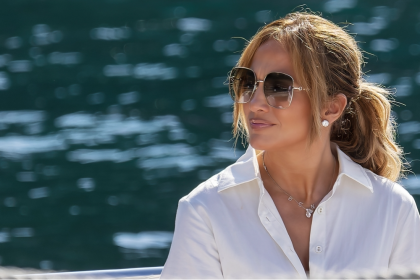The journey to recovery after a relationship ends doesn’t have to be walked alone – these seven activities can become your companions on the road to rediscovery
The aftermath of a relationship ending often leaves a void that seems impossible to fill. The emotional turbulence can make each day feel like an uphill battle, with memories lurking around every corner. Yet within this challenging chapter lies an extraordinary opportunity for transformation and self-discovery. Embracing new hobbies serves as more than just a distraction – they become pathways to renewed purpose and joy. For those navigating the choppy waters of heartbreak, here are seven enriching activities that can help mend a broken heart while opening doors to unexpected adventures.
The culinary journey begins in your kitchen
- The kitchen often becomes a sanctuary during difficult times. Creating nourishing meals engages all your senses, offering an immersive experience that grounds you in the present moment. Beginning with simple recipes allows for small victories that boost confidence when it might be at its lowest. Gradually expanding your culinary repertoire introduces excitement and anticipation into your daily routine.
Many find that cooking classes, either virtual or in-person, provide structure and community during a time when both might feel absent. The methodical process of measuring ingredients, the rhythmic chopping of vegetables, and the transformative magic of combining flavors creates a meditative experience that soothes a wounded heart. Furthermore, preparing meals for friends or family members reestablishes social connections that might have diminished during your relationship.
The satisfaction of creating something delicious from scratch mirrors the process of rebuilding yourself – layer by layer, ingredient by ingredient, until something wonderful emerges.
Framing your world through photography
- A camera lens offers a unique perspective – one that encourages you to seek beauty even during dark times. Photography cultivates mindfulness as you become attuned to details that might otherwise go unnoticed: the interplay of light and shadow, fleeting expressions on strangers’ faces, or the geometric patterns in urban architecture.
This visual art form doesn’t require expensive equipment to begin. Your smartphone camera serves as an adequate tool for exploring this creative outlet. Photography communities, both online and local, welcome beginners and provide constructive feedback that helps refine your skills.
The process of capturing, editing, and sharing images creates a narrative of your healing journey. Each photograph becomes a milestone marking your evolving perspective as you move forward. Many find that photographing natural landscapes particularly therapeutic – the vastness of oceans, mountains, or forests puts personal problems into perspective while showcasing the enduring beauty that exists regardless of emotional pain.
Finding stillness through meditation practices
- When emotions threaten to overwhelm, meditation offers an anchor. This ancient practice teaches the essential skill of observing thoughts without becoming attached to them – particularly valuable when memories or regrets surface unexpectedly.
Beginning with just five minutes daily creates a foundation that can expand as comfort grows. Guided meditation apps provide structure for newcomers, while community meditation centers offer support from experienced practitioners.
The benefits extend beyond emotional regulation. Regular meditation improves sleep quality, reduces anxiety, and fosters compassion – including self-compassion, which often diminishes during relationship difficulties. This practice doesn’t eliminate pain but creates space around it, allowing you to experience difficult emotions without being consumed by them.
Many find that incorporating visualization techniques enhances their meditation practice. Imagining releasing balloons carrying painful memories or envisioning roots growing from your feet into the earth creates tangible metaphors for the healing process.
The healing harmonies of musical exploration
- Music speaks directly to emotions that words cannot express. Whether learning an instrument or developing a deeper appreciation for diverse genres, musical engagement activates multiple brain regions associated with pleasure and memory processing.
Learning an instrument provides measurable progress during a time when personal growth might seem stagnant. Piano, guitar, or ukulele offer accessible entry points for beginners. The physical aspect of playing – fingers pressing keys or strumming strings – creates an embodied experience that diverts attention from emotional pain.
For those preferring appreciation over creation, exploring unfamiliar musical territories expands cultural understanding while providing fresh emotional landscapes. Creating curated playlists that evolve with your healing journey documents your emotional trajectory, becoming a sonic diary of your recovery.
Live music events foster community connections while providing immersive experiences that temporarily suspend rumination about the past or anxiety about the future.
Reconnecting with nature through wilderness exploration
- Nature provides perspective that urban environments rarely offer. Hiking combines physical exertion with natural beauty, creating a multisensory experience that temporarily disrupts thought patterns focused on loss.
Beginning with local trails builds confidence before tackling more challenging terrain. Many cities maintain urban nature preserves accessible by public transportation, making this activity available regardless of location or experience level.
The physiological benefits complement emotional healing. Increased heart rate, fresh air, and natural light regulate sleep cycles often disrupted by emotional distress. The visual vastness of natural landscapes – whether mountains, forests, or beaches – creates cognitive shifts that make personal problems seem manageable in comparison.
Hiking groups welcome solo adventurers, creating opportunities for connections based on shared experiences rather than romantic potential. These communities often become support networks extending beyond trail boundaries.
Expressing emotions through artistic creation
- Art therapy principles suggest that creating visual representations of internal experiences facilitates processing complex emotions. Drawing, painting, or sculpting bypasses verbal processing, accessing emotions that might remain inaccessible through conversation alone.
Beginning with simple materials removes pressure for technical perfection. Watercolors, colored pencils, or modeling clay require minimal investment while providing sensory engagement. The focus shifts from outcome to process – experiencing how colors blend, how pressure affects line quality, or how clay responds to touch.
Many find that abstract expression proves most liberating, removing expectations of representational accuracy. Creating visual journals combines written reflection with imagery, documenting the nonlinear nature of emotional healing.
Local art centers offer structured classes that provide technical guidance while fostering community. The vulnerability inherent in sharing creative work creates authentic connections difficult to achieve through casual interaction.
Writing your way toward clarity and closure
- Journaling transcends simple diary-keeping, becoming a dialogue with yourself that clarifies thoughts and identifies patterns. Regular writing practice creates emotional distance from experiences, allowing perspective that remains elusive when thoughts circle endlessly.
Various approaches serve different needs throughout the healing journey. Stream-of-consciousness writing eliminates self-censorship, revealing underlying concerns. Structured prompts direct reflection toward specific aspects of recovery. Gratitude journals redirect attention toward positive elements that persist despite loss.
Some find fiction writing particularly therapeutic, transforming personal experiences into narratives where they control outcomes. Poetry distills complex emotions into powerful, concise expressions. Letter-writing – crafting messages never intended for sending – allows complete honesty without consequences.
The progressive nature of a journal documents growth that might otherwise go unnoticed. Reviewing earlier entries reveals emotional evolution invisible during day-to-day experience.
The end of a relationship creates space for beginnings elsewhere in life. While the initial emptiness feels threatening, it eventually becomes fertile ground for cultivation of new interests, skills, and connections. These seven activities offer structured approaches to filling that space intentionally rather than reactively.
Remember that healing follows individual timelines. Some activities might resonate immediately while others require experimentation before clicking. The objective remains consistent: creating experiences that generate joy, accomplishment, and connection independent of romantic relationships.
Each hobby becomes more than mere distraction – it represents investment in yourself, recognition that your happiness deserves active cultivation. This self-prioritization often becomes the most valuable lesson emerging from relationship endings, creating foundations for healthier connections in the future.
The path forward winds rather than straightens, with progress measured in moments of engagement rather than linear advancement. Each minute spent absorbed in cooking, photography, meditation, music, hiking, art, or writing represents victory – evidence of your capacity for joy despite loss.
In embracing these activities, you’re not just filling time until another relationship begins – you’re crafting a rich, multifaceted life that stands complete on its own terms.















